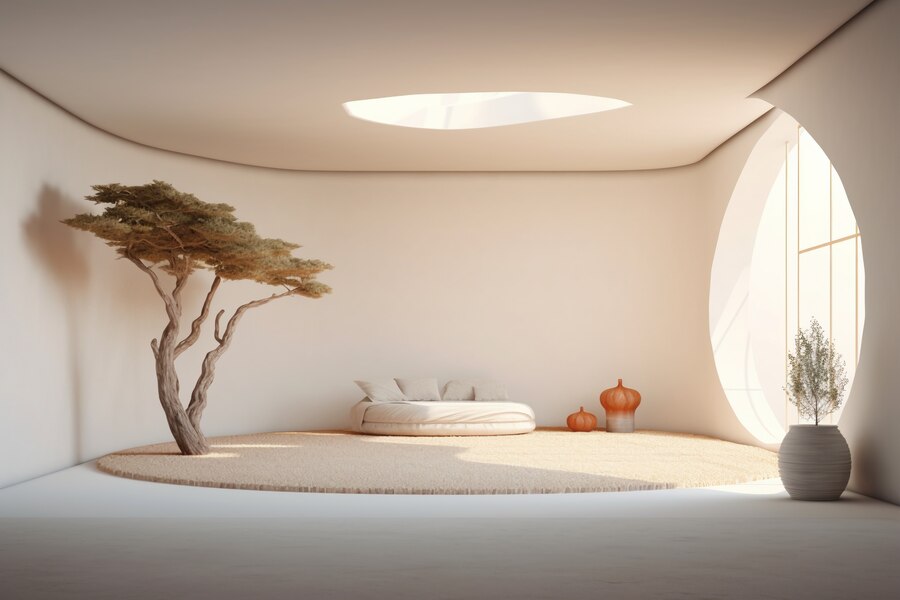
Curved walls add a unique touch to any home, creating a sense of flow and elegance. However, when it comes to installing baseboards on these walls, the process can be tricky. Fortunately, you can achieve a professional look without too much hassle with the right tools and techniques. In this guide, we’ll walk you through how to easily install curved baseboards, ensuring they fit snugly against your wall—whether it’s a gentle curve or a tight corner.
Understanding the Basics of Curved Baseboards
Before diving into the installation process, it’s essential to understand why curved baseboards require special attention. Unlike straight walls, curved walls demand that the baseboard material be flexible enough to bend without cracking. The tighter the curve, the more challenging this becomes. Sometimes, you might need to bend the baseboards yourself, especially if you’re working with wood, which can be less flexible than alternatives like MDF or PVC.
Step 1: Choose the Right Material
When dealing with curved walls, the material of your baseboard is crucial. Wood, while traditional and elegant, can be difficult to bend, especially around tight curves. For more flexibility, consider using:
- MDF (Medium-Density Fiberboard): A popular choice due to its flexibility and affordability. MDF can be bent around gentle curves without breaking.
- PVC (Polyvinyl Chloride): Another flexible option, ideal for areas prone to moisture, like bathrooms or basements.
If you’re determined to use wood, choose a species known for its pliability, such as pine or poplar.
Step 2: Measuring and Cutting
Accurate measurement is the key to a perfect fit. Start by measuring the length of the curved wall where the baseboard will be installed. Always measure twice to ensure precision. Once you have your measurements, cut the baseboard to size using a miter saw for clean edges.
For tight curves, consider cutting the baseboard into smaller sections and then reassembling them around the curve. This technique, known as kerf cutting, involves making multiple cuts along the back of the baseboard to increase its flexibility.
Step 3: Bending the Baseboard
If your baseboard material isn’t naturally flexible enough, you’ll need to bend it yourself. Here’s how you can do it:
- Steam Bending: Using steam to soften the wood makes it more pliable. Place the baseboard in a steam box for about an hour, then carefully bend it around the curve while it’s still warm and flexible.
- Kerf Cutting: As mentioned earlier, kerf cutting involves making shallow cuts along the back of the baseboard. These cuts allow the wood to bend without breaking. Space the cuts evenly, about 1-2 inches apart, depending on the tightness of the curve.
- Soaking in Water: Another method for bending wood involves soaking the baseboard in water. Submerge the baseboard in warm water for several hours, then bend it to fit the curve. This method is less common but effective for gentle curves.
Step 4: Installing the Curved Baseboard
Once your baseboard is shaped to fit the curve, it’s time to install it. Follow these steps:
- Dry Fit: Before attaching the baseboard, do a dry fit to ensure it aligns perfectly with the wall. This step is crucial, as it allows you to make any necessary adjustments before permanent installation.
- Apply Adhesive: Use a strong construction adhesive designed for baseboards. Apply the adhesive to the back of the baseboard, focusing on areas where it will contact the wall.
- Secure with Nails: After applying the adhesive, press the baseboard against the wall. Use finishing nails to secure it in place. For tight curves, you may need to hold the baseboard in position until the adhesive sets.
- Fill and Finish: Once the baseboard is installed, fill any gaps or nail holes with wood filler. Sand the filled areas smooth, then paint or stain the baseboard to match your decor.
Step 5: Addressing Tight Curves
Tight curves present a unique challenge. For these areas, patience and precision are key. If you’re struggling to bend the baseboard enough, consider cutting the baseboard into smaller sections and then reassembling them around the curve. Alternatively, you can use flexible molding specifically designed for tight curves.
When working with tight curves, don’t rush the process. Take your time to ensure each section of the baseboard aligns perfectly with the next. This meticulous approach will result in a seamless finish that enhances the look of your curved walls.
Final Touches
After the baseboard is installed and the adhesive has fully cured, inspect your work. Ensure that the baseboard fits snugly against the wall and that there are no gaps. A final coat of paint or finish can help blend the baseboard with the wall, giving your room a polished, professional appearance.
Need Help? Contact Getz Handyman!
Installing curved baseboards can be a rewarding DIY project, but it’s not without its challenges. If you find yourself in need of expert assistance, don’t hesitate to contact Getz Handyman. Our experienced team is ready to help you with baseboard installation and other home improvement projects in Las Vegas. Let us take the hassle out of your hands, so you can enjoy the beauty of your home’s unique design!

